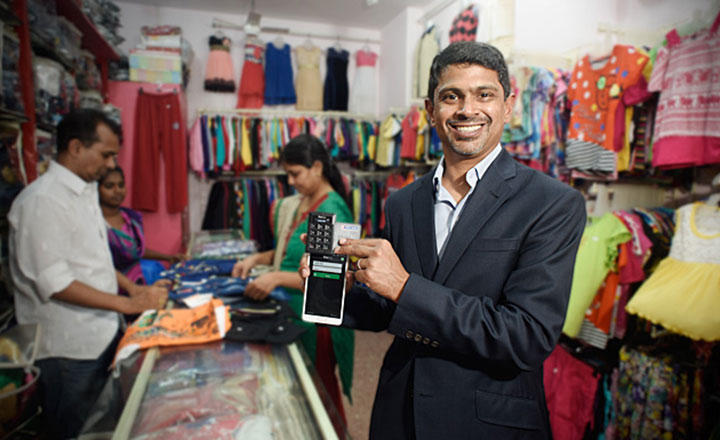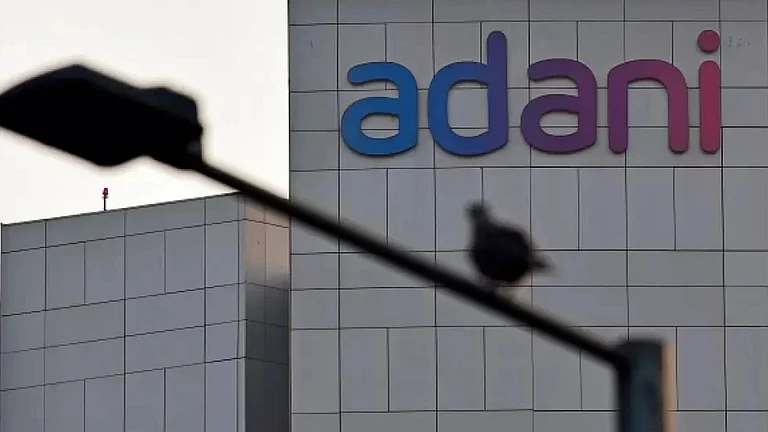Given the sheer number of payments service and solution providers that have sprung up in the banking ecosystem in recent times, you could be forgiven for assuming that Ezetap is yet another Paytm-like mobile wallet. In reality, however, the company is a portable card payment device manufacturer that builds such devices at a fraction of the current cost. Most card payment devices are currently imported from companies in China, Europe and the US and can cost up to Rs.15,000; Ezetap builds the same for Rs.3,000 at its Bengaluru factory. It has been able to achieve this by designing and building the devices in-house with the help of its engineering team, thus maintaining tight control over production costs and price points. Ezetap retails a pocket-sized point of sale (PoS) chip, pin and magnetic strip scanner that not only reads the magnetic strips on credit and debit cards but can also convert mobile devices such as smartphones and tablets or even Windows desktop PCs into PoS terminals. The company then processes the payments by uploading the card information onto its secure SaaS cloud platform. Ezetap also provides its customers Android, iOS and Windows apps to process payments. The company’s device has become quite popular with retail outlets, restaurants, businesses, insurance companies, fast-moving consumer goods companies, banks and e-tailers such as Amazon, Urban Ladder and BigBasket.
The company also follows a slightly altered payment process on its devices. On most other such payment devices, the merchant has to pay the bank about 1-3% of the total transaction cost on each transaction. In addition, mobile payment companies such as Pine Labs and MSwipe charge merchants an extra commission of 1.5-1.8% on each transaction and a monthly recurring fee. But Ezetap has turned this process on its head by not charging its customers on a per transaction basis. The company believes that revenue models based on a cut of the transaction percentage or merchant discount rate (MDR) charged by banks are fundamentally flawed and unsustainable, as increasing digitisation has driven down the cost of electronic transactions to almost nothing. Instead, it is working on a subscription model by asking customers to fork out a deposit of Rs.450 for its device and a monthly SaaS licence fee of Rs.150, which could be higher depending on the services provided. Ezetap also charges much larger sums from large corporations (the company declined to share their names), to which it provides customised services that help increase their sales or operational efficiencies. These services include a mobile payments software development kit, which allows enterprise customers to seamlessly integrate Ezetap’s payment service with whichever user experience application they have already employed.
Take the case of a leading insurance company that became Ezetap’s customer in 2013. The firm sold policies that involved a lot of paper work, reconciliation, cheque handling and back-end support and the process was prone to errors on part of both the agents and the customers. The company’s payments would consequently get delayed, and the overdependence on cheque-based transactions only compounded the problem. In 2013, the insurance company provided its agents with tablets equipped with an Android app that they could use to deposit premium payments, issue policies and settle claims. The app was then integrated with Ezetap’s payment services so that payments from all cards could be accepted electronically. This allowed agents to issue and activate policies at the customers’ doorsteps, saving cost and time. It also helped reduce loss of sales, as there was now very little chance of customers changing their minds about buying the policy.
Apart from this, Ezetap also retails the device to banks such as SBI, HDFC and Citibank. In some cases it is much more efficient for Ezetap to sell a device to a bank and for a bank to resell to a merchant. The typical SME or kirana store in tier 2 and 3 cities is difficult for Ezetap to reach or collect money from. But banks like SBI and HDFC have the reach and relationships with merchants for banking and financial services. In that case, Ezetap would sell the device or service via the bank, which would collect the money from the merchant and pay back Ezetap. In the case of large corporate merchants like Amazon or Airtel or Bajaj, Ezetap sells to them directly and collects a licence fee.
In the interest of safety, Ezetap’s devices are compliant with the global PCI standards, as well as the stringent payment security norms laid down by the RBI. Says co-founder Abhijit Bose, “When we started this business 2011, the payments industry in India was bank-driven and required high capital expenditure. Less than 100,000 ATMs and 700,000 PoS terminals existed back then for about 350 million debit and credit cards across 10 cities. Nobody had ventured into tier 2 and 3 cities, nobody had targeted the premium segment, no one had tried to integrate mobile payments in financial inclusion programmes. Ezetap has changed all of that.”
Not small change
Bose, a mechanical engineer from Cornell and an MBA from Harvard met Sanjay Swamy in 2011. Given their similar background of working with mobile payments, Swamy convinced Bose to start a mobile payment company along with Angel Prime a seed-stage VC fund he started with Bala Parthasarthy (who has since left the fund) and Sripati Acharaya. Swamy also introduced IIT alumnus and ex-Intel employee Bhaktha Keshavachar who had developed a pocket-sized smart device that could read both debit and credit cards. The rest, as they say, is history.
Ezetap has not only ventured into tier 2 and 3 cities through a partnership with SBI but has also connected 600,000 villages to major financial services as part of Jan-Dhan Yojana, the central government’s financial inclusion programme. It does this by providing Android-enabled phones and Ezetap devices in kirana stores in the hinterland, enabling villagers to transfer funds and make payments. It also works with microfinance and micro pension institutions. Typically, these institutions and the Jan Dhan Yojana provide a card to the villagers. Ezetap has created an application and added it to its PoS device so that instead of just being used for payments it can also be used to add money to the card issued to the villager by Jan Dhan Yojana. The cost of the device is borne by the institutions or the banks. They also have an application called Cash at PoS, which allows consumers to withdraw cash from merchants. Previously a credit card or ATM terminal could only be a credit card or ATM terminal. But now every Ezetap device sold also makes the merchant also a cash dispenser with a bank.
Not surprising, then, that the the size of the opportunity in this space is humongous. So far, supply has lagged behind demand. According to RBI, there is a need for 20 million PoS devices. But the country has a mere 14 lakh PoS terminals and 200,000 ATM machines as of now. Ezetap has been quick to zero in on this gap. Of the 1.3 lakh PoS terminals added between 2014 and 2015 in India, Ezetap accounted for 30,000, or 20%. Considering that the company put up the devices for sale only in 2013 due to certification delays, its performance is quite impressive. Today, Ezetap processes transactions worth Rs.10 crore every day. The company is looking at selling 2 lakh devices in the near future.
As for new product offerings, the company has already implemented the integration of digital wallets such as Paytm and MobiKwik for the convenience of its customers. It plans to turn its smaller retail customers into all-in-one centres for bill payment, phone and internet recharge and so on. The company employs a team of 400 salespersons to sign up businesses and activate bank partnerships.
Of course, Ezetap has had its share of challenges and learnings. Bose says that the biggest lesson so far has been that revenue and business models from the US and other developed markets simply cannot be replicated in India. “Starting and growing the business is very different here, as you have to have the right revenue model. Your cost of customer acquisition and unit economics has to be perfect. Also, local factors such as the nuances of how merchants behave affect processes. After all, people here are both cost- and value-conscious. That forces us to try much harder,” says Bose.
Ezetap has received more than its share of support from the VC space: the company raised Rs.50 crore from Helion Venture Partners, Peter Thiel and the Social+Capital Partnership and Berggruen Holdings. In August 2015, it raised a further Rs.150 crore from existing investors as well as new VCs Horizon Ventures and Capricorn Investment Group. Rahul Chandra of Helion believes the company has a key advantage — with PoS being directly linked to cash flows, businesses can use it as a means to study cash flow movements. “The most exciting aspect of Ezetap is that it has a workflow module (SaaS architecture) on top of the device, which is what enables it to provide value-added services to the merchant, plus the ability to accept almost any form of payments and process it at the lowest cost,” adds Chandra.
Sizing up rivals
At present, Pine Labs and Mswipe are Ezetap’s only direct competition. While Pine Labs focuses on large-format retailers and enterprises, Mswipe focuses on SMEs and doesn’t partner with banks. In terms of distribution and scale, while Ezetap has achieved a penetration of 100,000 mobile PoS terminals from 2013 till date, MSwipe has set up just 40,000 terminals in the same time period; the latter also charges a very heavy up-front installation fee to cover its costs. Finally, neither MSwipe nor Pine Labs offer multi-payment services, unlike Ezetap, and neither of them focuses on financial inclusion services. With Ezetap, merchants have access to all current and future digital payment options such as m-wallets, Aadhar-based banking transactions and hundreds of other services that can help increase their sales, improve their business or even help them get access to loans. This is the company’s chief USP, which it can use to build on its first-mover advantage. What also differentiates it from the new wireless PoS devices adopted by banks of late is that the latter are dumb devices that can only process card transactions. In contrast, Ezetap’s devices offer a host of smart applications. In June 2014, it acquired the Hyderabad-based loyalty platform Clinknow that helps merchants create and push real-time mobile offers to customers.
What’s next on the company’s agenda? Apart from India, the company is present in Kenya and the UAE, and is now considering a foray into southeast Asia, though Bose is tight-lipped on the specifics. The company is now looking at foraying only into emerging markets, with the UAE being the sole exception. “Our revenue and distribution model are geared for India, so we believe it should be successful in emerging markets. We also understand the psyche of consumers in emerging markets much better than in developed ones. So, this will remain our focus in the short and medium term,” says Bose. Having set a scorching pace of growth, the question that begs an answer is: will Ezetap be the next big thing in payments or is it already?











